From the surface of the flight deck, one feature stood literally above all the rest. A superstructure rose several stories into the sky, with a commanding view of everything happening on and around the ship.
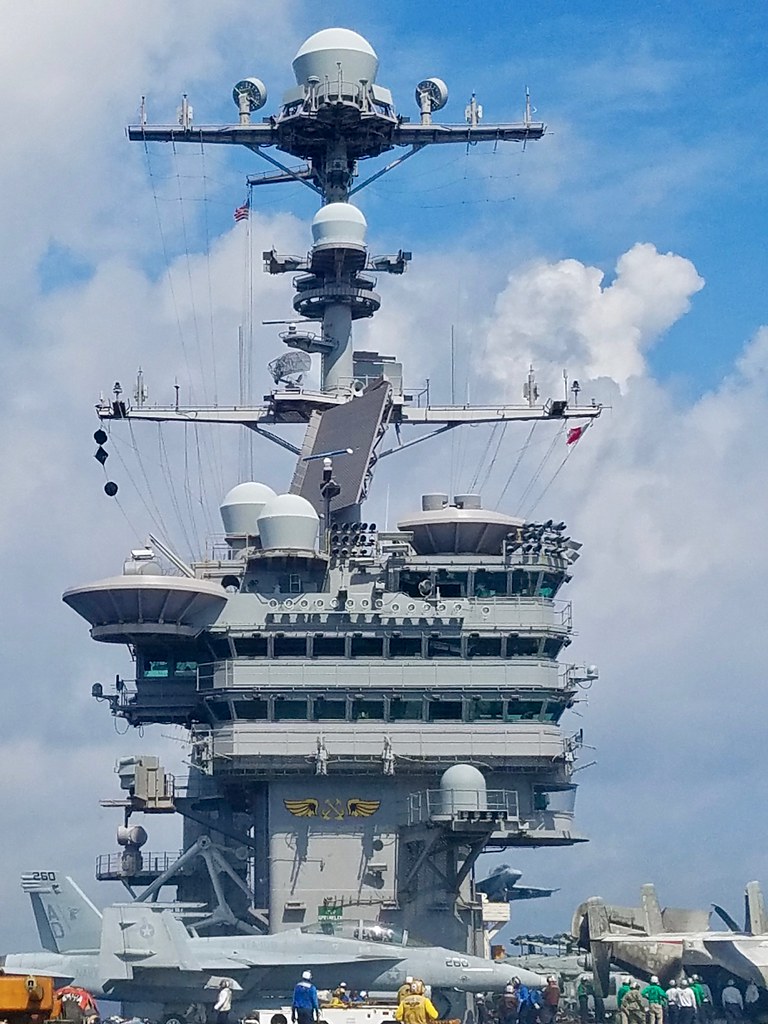
The Navy called this feature the “Island.” Funny, I kind-of thought of the whole aircraft carrier as an island, completely surrounded by ocean with no land in sight. I guess that made this deck-top tower an Island-upon-an-Island.
While large and visible on the carrier, this island would be pretty small if it were an office building, which is how it functions in some respects. Compare it to the people and jets in the foreground and note its size. Nevertheless, it served as the nerve center for the ship and the carrier group overall. Different functions happened within distinct layers of the decks.
The Bridge
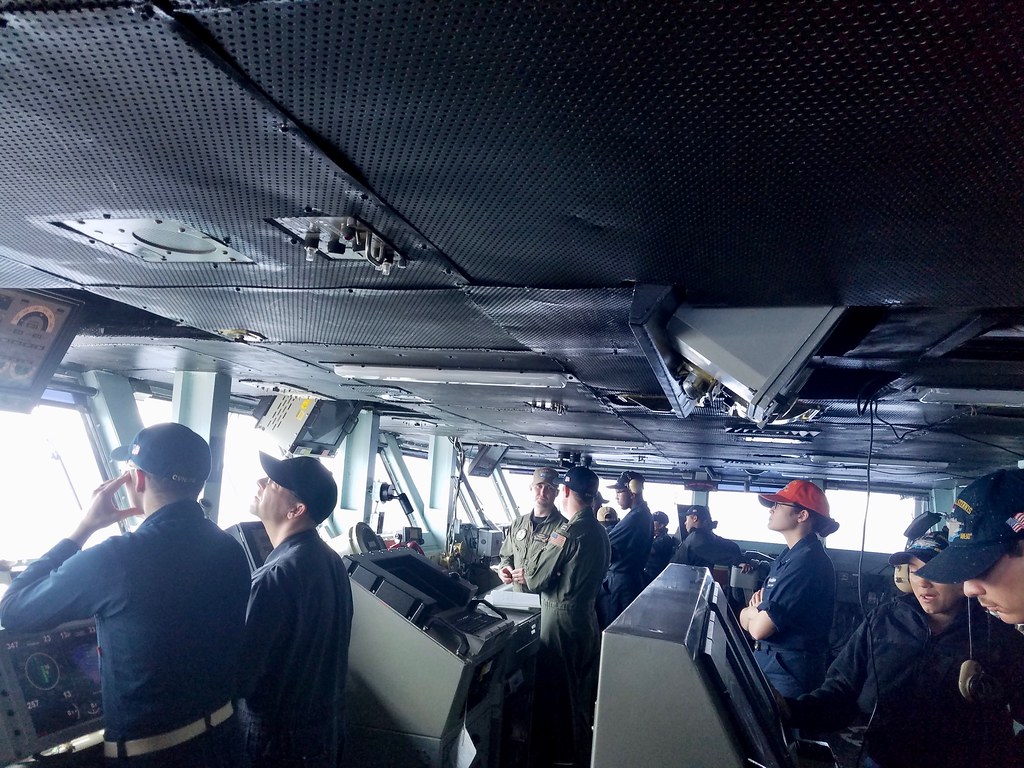
The Captain occupied the bridge, with his cabin located a few decks directly below. He could return to the bridge at a moment’s notice, climbing steep stairwell ladders to reach his perch as necessary. The bridge hummed with constant activity because we visited during an active deployment.
However, the captain didn’t personally steer the ship. I had visions of the captain standing behind a large wooden wheel, turning it back and forth like in a pirate movie. Not so. Rather, the captain gave orders that were transmitted to someone on his staff who then turned a little wheel even smaller than one found in a automobile! Imagine an entire aircraft carrier, more than a thousand feet (330 metres) long, guided by a tiny physical movement on a little wheel from the bridge.
Flag Bridge
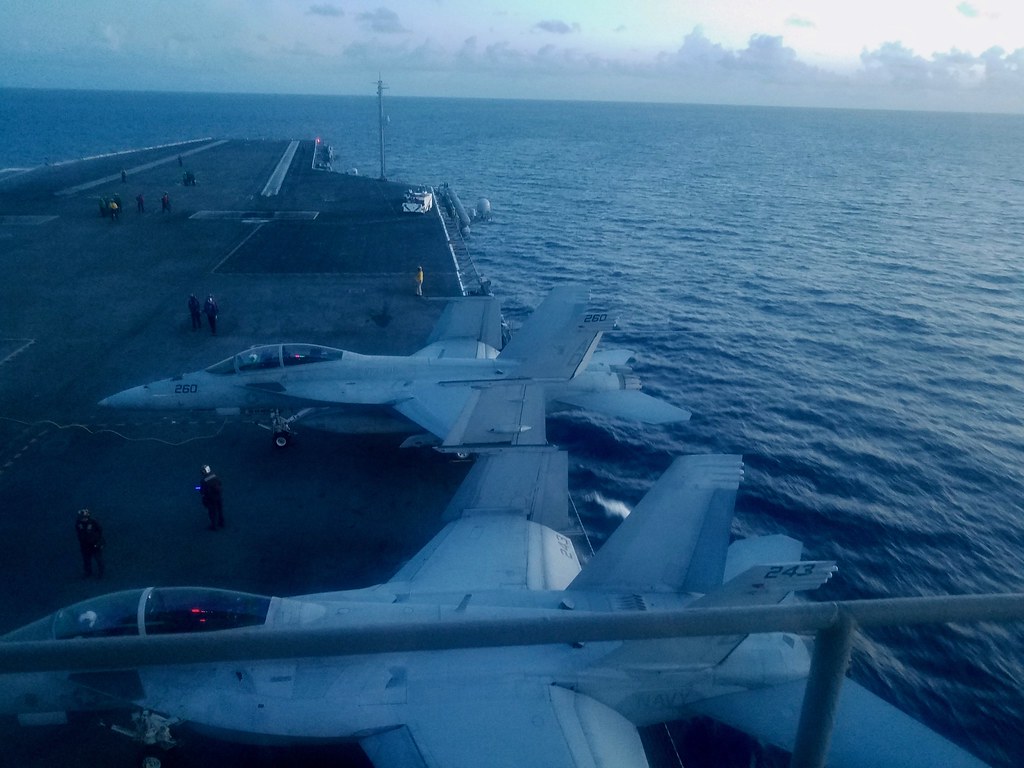
The Stennis also had a flag bridge, so called because a flag officer — in this case an admiral who commanded the carrier battle group — occupied the space. In an earlier article I noted that the admiral and his staff did not deploy for this brief training exercise.
The flag bridge remained empty during our visit so we got to spend a lot of time there hanging out. It gave a great view of the flight deck and I passed a lot of time just staring out the window watching a hypnotic cycle of takeoffs and landings. It never got old.
Flight Deck Control Center

I really liked the flight deck control center too. It had as nice a view as one would expect although I appreciated another feature even more, the “Ouija Board.” It had two layers, replicating the flight deck and the hangar bay. Little wooden cutouts represented every airplane on the ship, and crew members moved them on the board in alignment with their real-world positions.
They also took small random objects like nuts (the metal thingies that attached to bolts, not something from a tree) and the tops of plastic push-pins and placed them on top of the cutouts to reflect certain details. These they stored in an beat-up metal can. Open that photo in another window, zoom in and you can see them.
It seemed like something overdue for automation and indeed, electronic screens mounted on the wall contained the exact same information. The crew explained that they needed a manual Ouija Board in case the computers ever went down. They could use it as backup. Except, they seemed to be using the board as the primary tool with the computers as backup. I think they simply liked the simplicity and quaintness of the low tech board, and it did have a certain charm.
Vulture’s Row
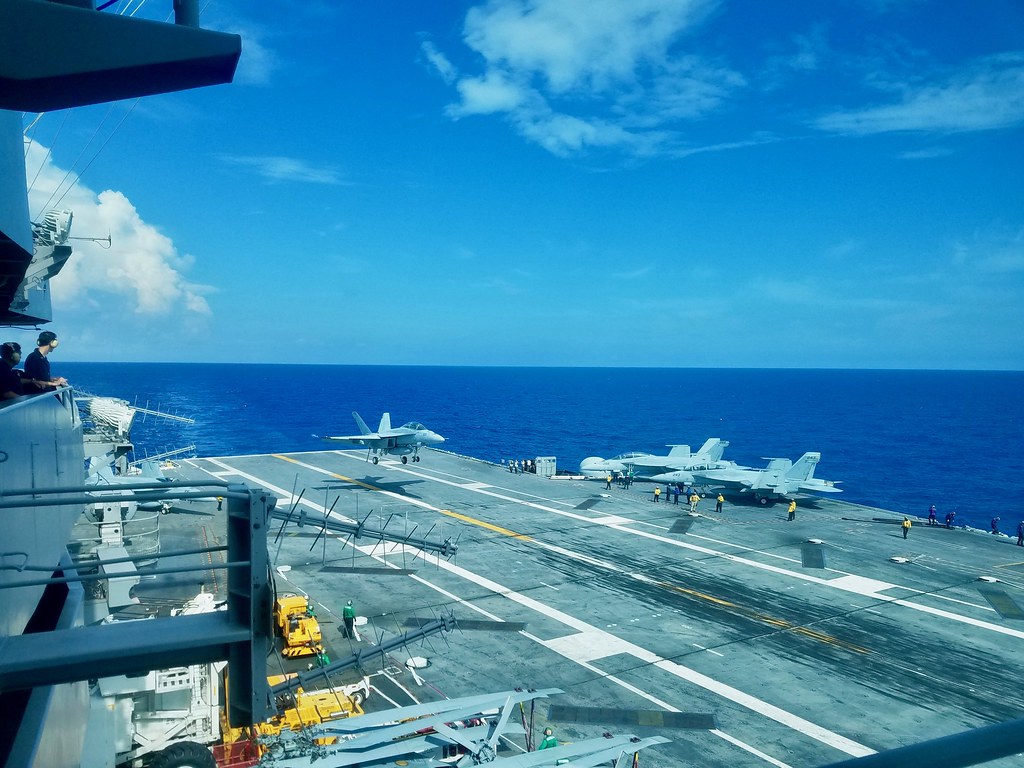
A balcony outside of the captain’s bridge had an unusual name, Vulture’s Row. It offered a great open-air view of the flight deck. I suppose people on the balcony could be seen from the flight deck and they probably looked like a bunch of vultures hanging out there. In the photo, two people can be seen on the left. They’re standing on Vulture’s Row. We got our chance to do the same thing later that evening. I filmed the nighttime landing scene in the video from there.
But I don’t have any more to add to this. I mentioned it only because I liked the creative name.
Other Stuff
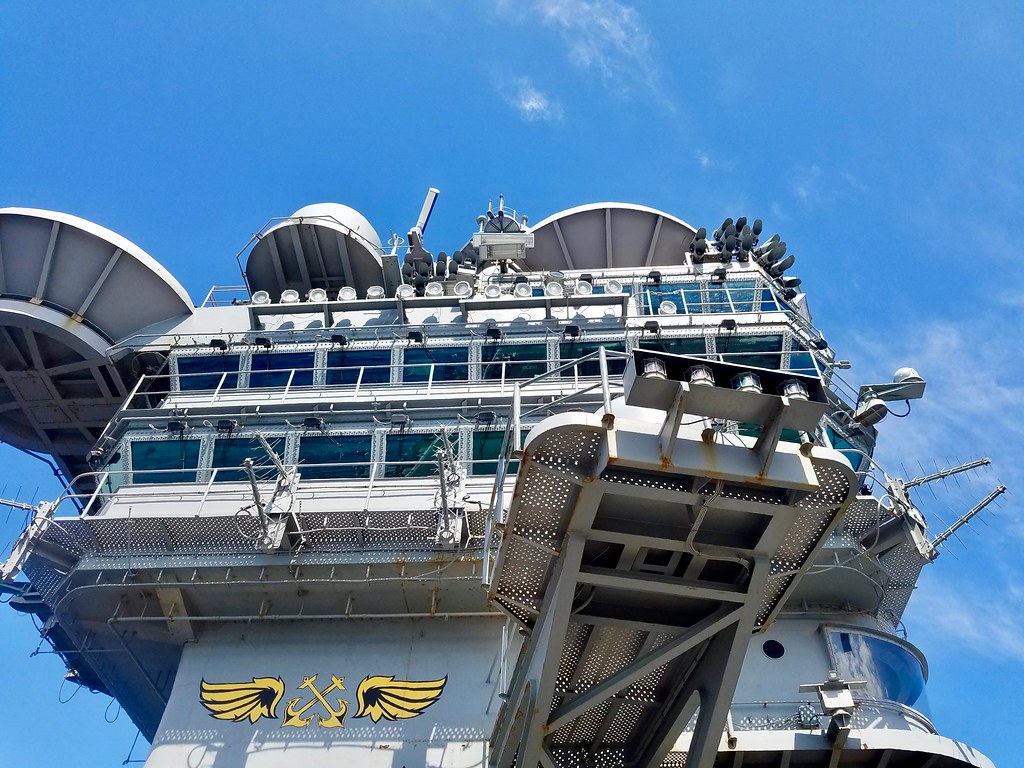
A bunch of other activities took place within the island. Generally we could take photos as long as we kept display screens out of the images. In a handful of instances we were asked to refrain from taking any photos at all. Thus, I can mention some of these places although I don’t have anything to show for it.
Air traffic controllers performed activities similar to their civilian counterparts, making sure jets stayed safe within surrounding airspace. Another group watched for enemy intrusions within a certain range, prepared to take military countermeasures if necessary. Those crew members stayed in rooms with no windows, sometimes accessed by going through other rooms with no windows They had to sanitize or cover certain screens before we entered. We only saw what was proper for us to see.
The island also contained a large array of communications gear and antennas for all kinds of purposes never revealed to us. The crew explained in detail what they could talk about, although I’m sure the ship’s capabilities went well beyond anything I would ever learn.
Articles in the Aircraft Carrier Series:
- Getting to Norfolk
- All Aboard
- Air Power
- The Island
- Living Aboard
- Feeding Time
- Always Working
- Other Spaces and Places
See Also: The Complete Photo Album on Flickr

Leave a Reply